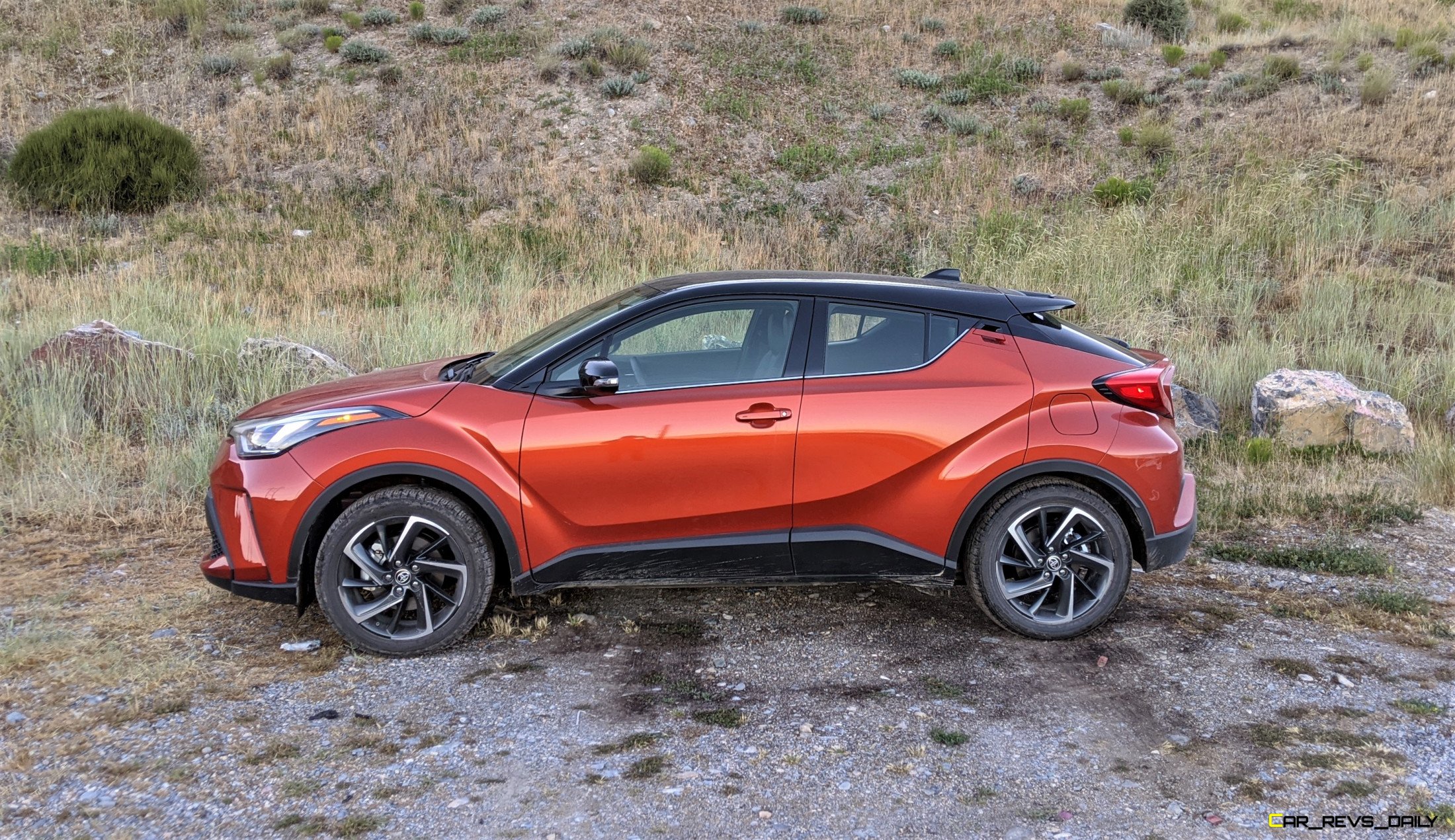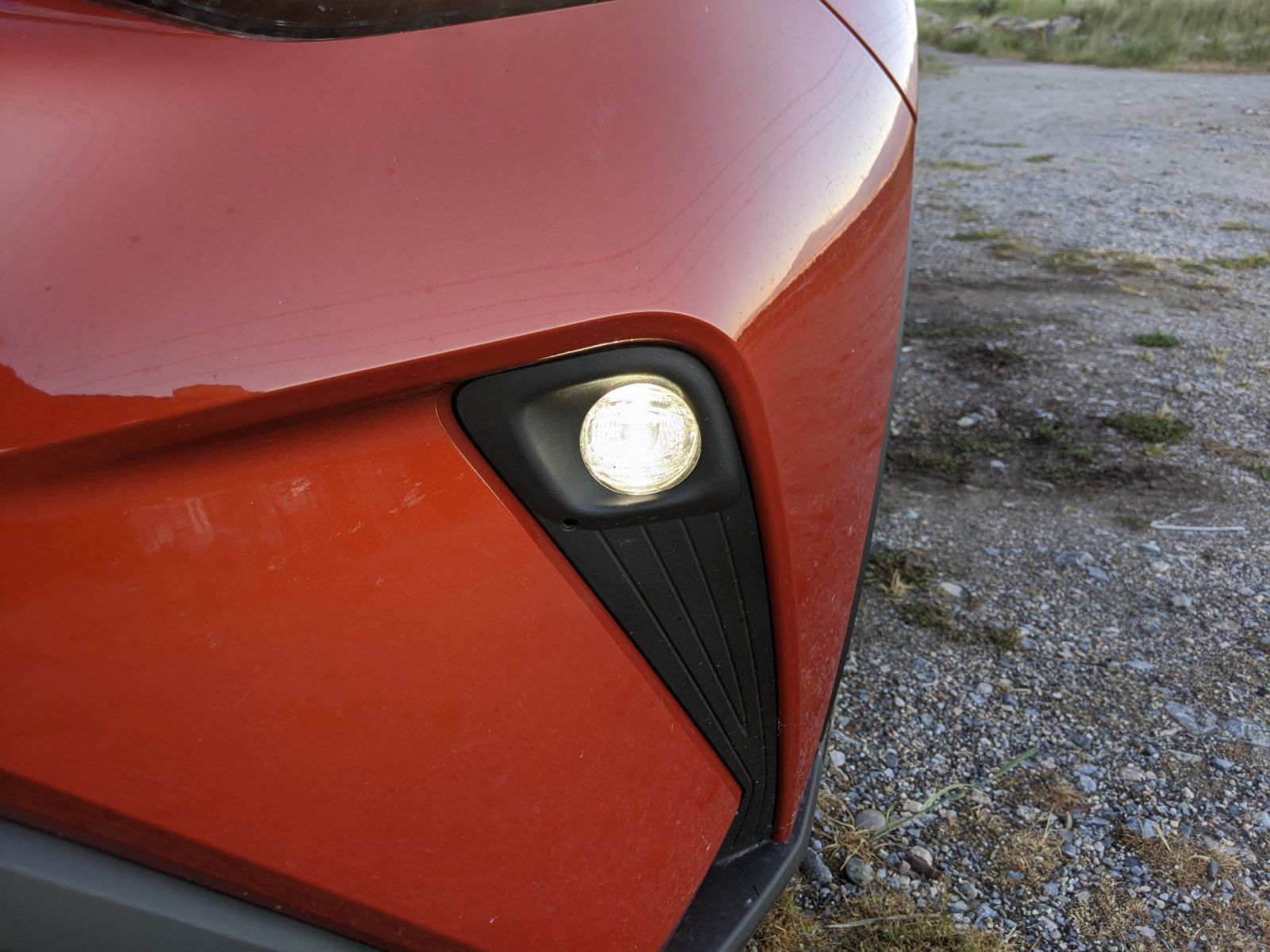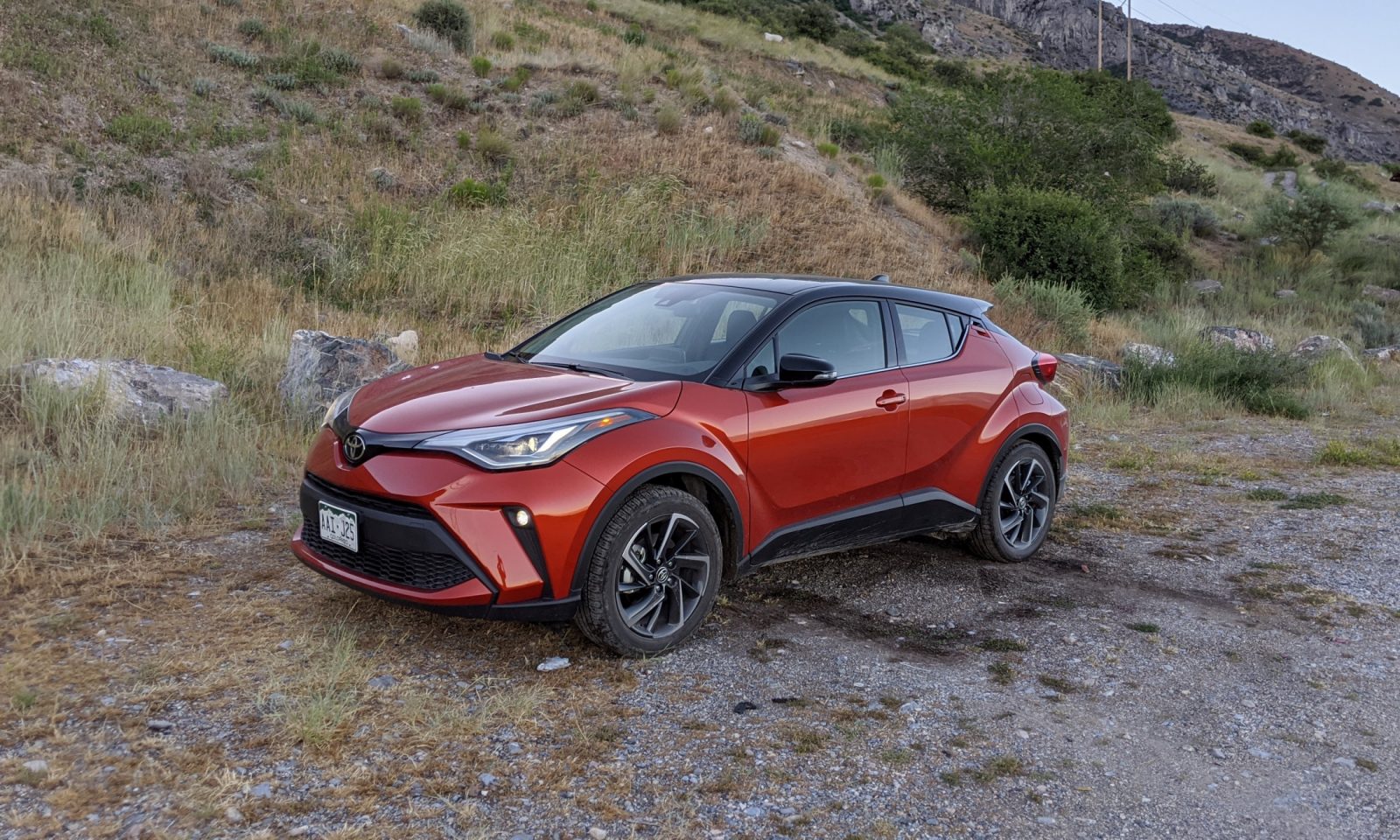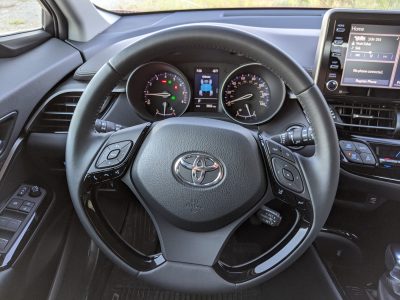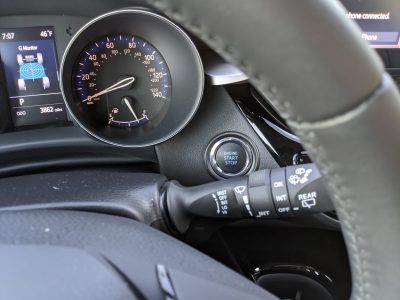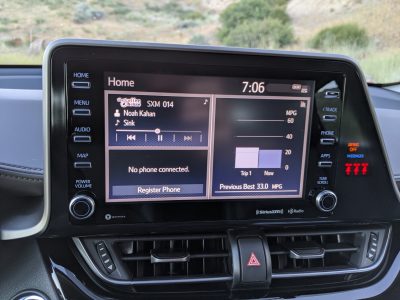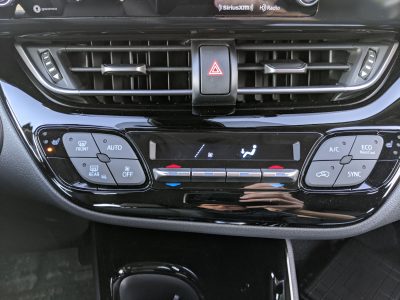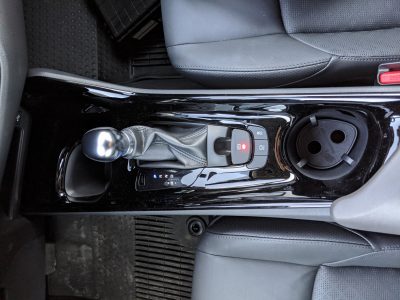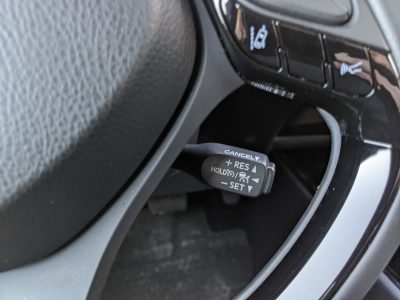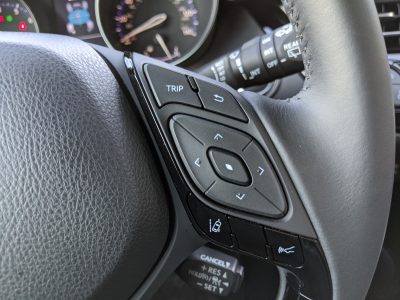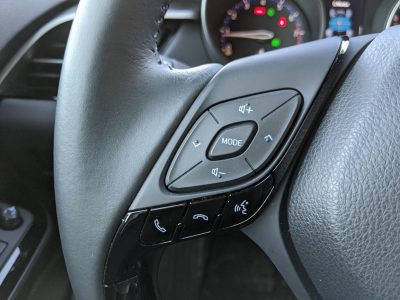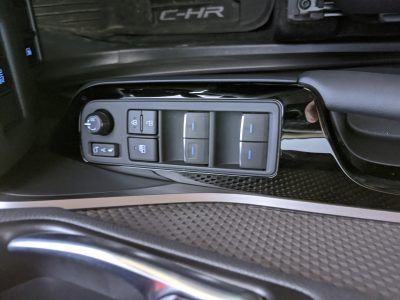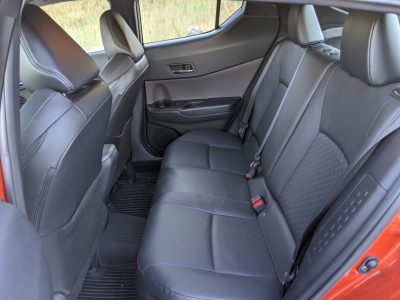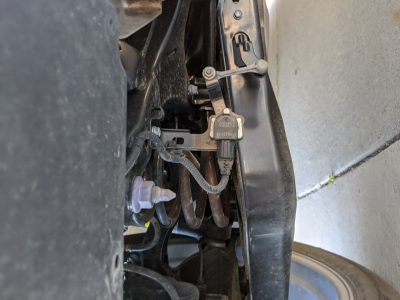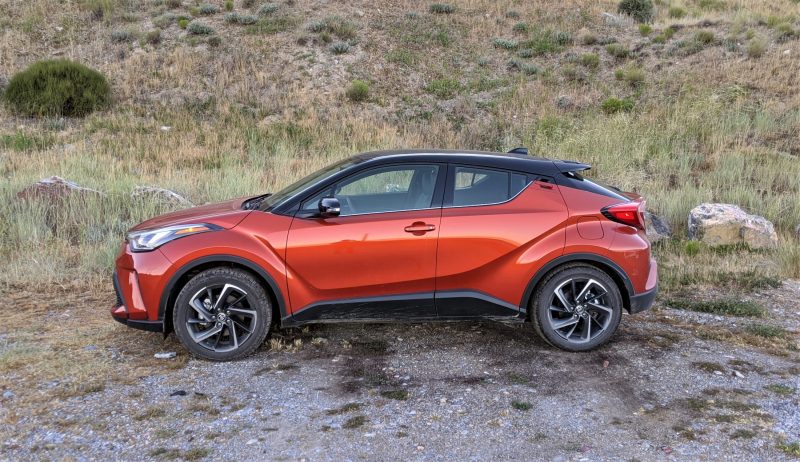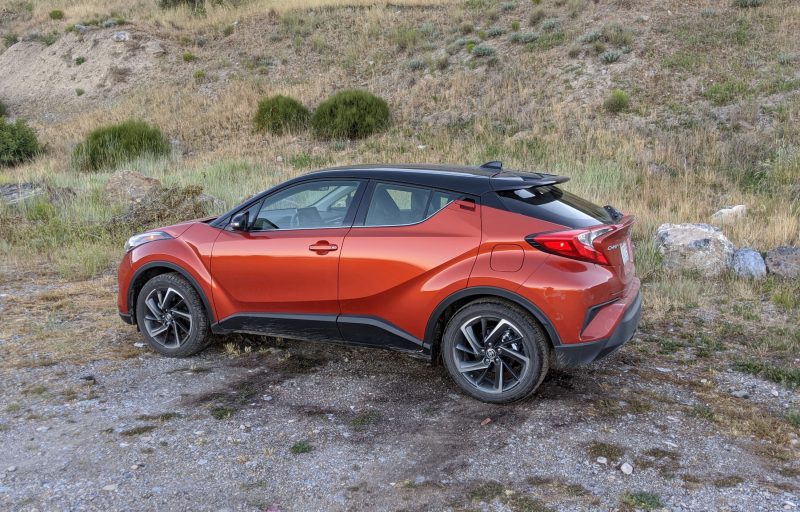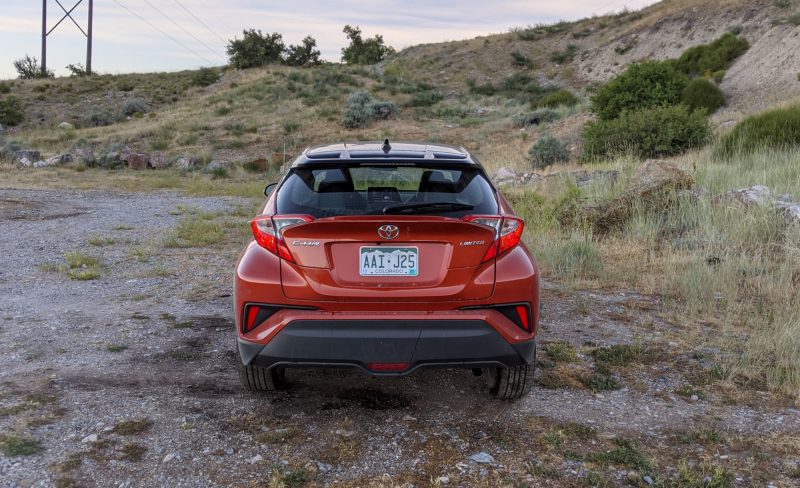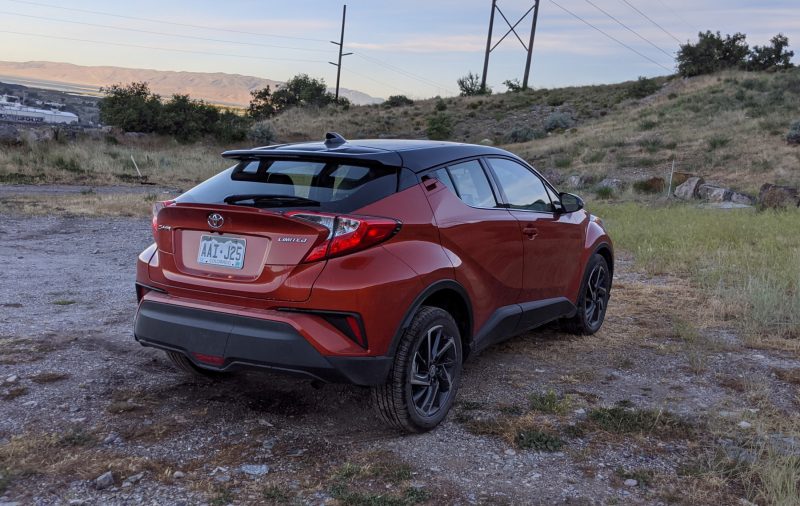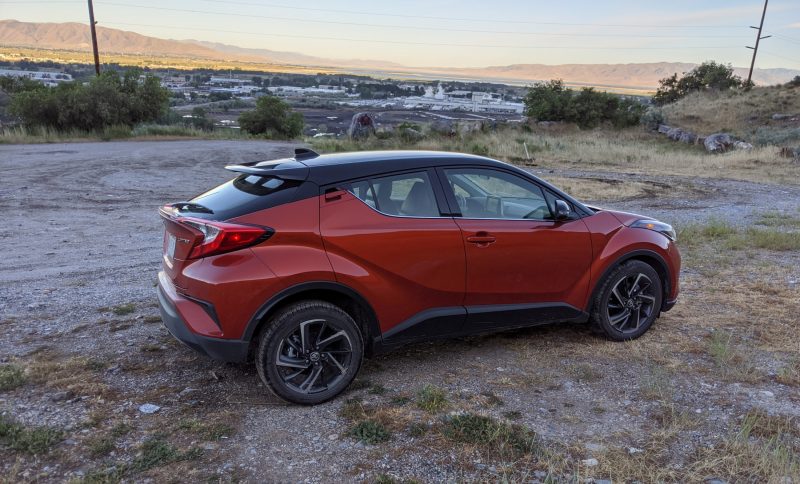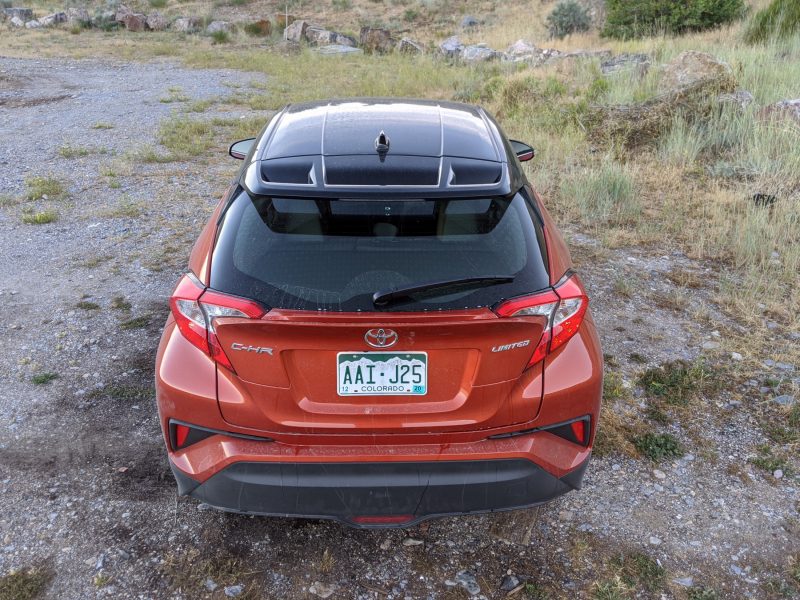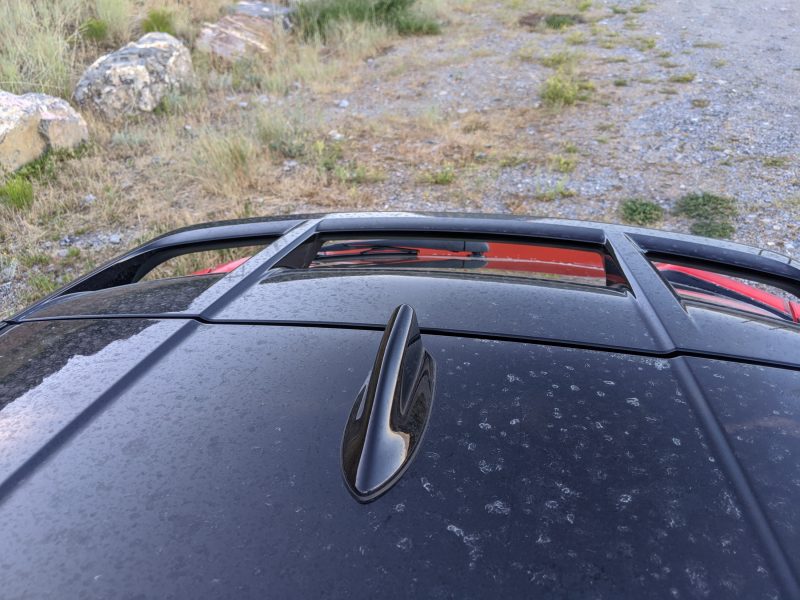For decades, Toyota has been known for having bland vehicle styling.
To change that reputation, they have recently made an effort to modernize their vehicles and add exciting features to the body work.
From the new Camry to the Tacoma, we’d say that it’s working. Continuing that trend, Toyota has updated the 2020 C-HR with a restyled front end, bold new colors, and attention-grabbing wheel designs. Toyota sent us a 2020 C-HR Limited trim to test for a week.
Exterior
The most common colors on vehicles sold in the US today are white, black, and every shade of grey in between. The C-HR Toyota sent us was painted in Hot Lava orange with two-tone paint, which is a bold, yet not overly bright, color with a black roof. For those looking for a unique color that doesn’t stand out too much, Hot Lava is a great choice.
Looking straight on at the C-HR from the front is reminiscent of the Toyota Yaris with an aerodynamic bulbous shape. The LED headlights wrap around the edges and cross one-third of the way from each side, leaving the middle-third with the Toyota badge and black inserts filling in the rest. The front bumper has triangular vertical slots on either side with round fog lights in each slot. While it doesn’t look tacky, it does look like the lights were added in after the design was finished.
Stepping slightly to the side immediately changes the perspective of this being another bland economy car from Toyota. Sporty lines of a hot hatch are prevalent. There are creases in the bodywork around the wheel arches that create an appearance of a wide body kit. The wheels themselves have spokes that land slightly off-center, displaying an illusion of motion when the vehicle is standing still. Black body side trim on the lower portions increase the sporty looks with the rear of the trim being taller than the front. Recessed rear door handles make for a flat, aerodynamic look. Also prominent from the side view is the rear spoiler, which extends from the roofline over the rear hatch.
Like the front, the rear maintains the economy shape, but there are sharp angles to help keep the sporty feel. The jagged C shaped taillights span across the body to the hatch giving an angular feel. Reflectors and trim in the rear bumper form a horizontal golf flag shape, which accents the black plastic lower bumper trim. All of this helps to hide the bulbous aerodynamic shape.
Interior
Inside, the C-HR still has a somewhat durably economy feel to it, which isn’t a bad thing. Toyota is known for being reliable, and the C-HR definitely has that feeling about it. It is equipped with all the standard features expected in a vehicle today, along with heated leather seats and an updated infotainment system.
The layout is clean, uncluttered, and driver-focused. Everything is within easy reach for the driver, and the buttons and switches are laid out in an easy-to-use fashion. There is no searching through the touch screen to adjust the climate or audio controls.
This is a very small vehicle class and the C-HR is on par with the rest. The center arm rest is wide enough for one arm, the rear can seat three people but only two comfortably, and the driver can reach just about anywhere in the front and rear rows while remaining seated. There are only two cupholders for the front row and two for the rear row. The front cupholders are located in the center console, with one in front of the shift lever and one to the rear of the shift lever. The rear cup holders are in each rear door.
Storage space is adequate, with room for four carryon bags. There are four anchor points on the rear storage floor for securing cargo, and two additional pockets on either side. Under the cargo floor are the spare tire and tire changing tools. There is additional space near the spare to store extra items like jumper cables and other emergency equipment.
Driving
Like most hatch backs, the C-HR is front wheel drive based, but Toyota doesn’t offer AWD on the C-HR at all. There is only one engine available, a 2.0 liter inline four cylinder that puts out 144 hp and 139 ft-lbs of torque.
That’s not a lot of power, but the C-HR also doesn’t weigh very much.
The C-HR is not fast by any means, and is at best on par with competitors like the Nissan Kicks. Others like the Kia Seltos and Ford Ecosport are much faster with their more powerful engine options.
Cornering is fun in the C-HR with tight handling and easy left foot brake oversteer. The ride is smooth and quiet enough, but mostly on par for this class. The CVT transmission does just fine, but still has simulated shift points. Fuel economy is good at 31mpg highway, 27mpg city, 29mpg combined.
Pricing
The base price of the C-HR Limited is $26,350, and our test model only had a few additional options. Our tester included the audio plus package for $465 and the two-tone paint. Add in the destination charge of $1,120 and the total price is $28, 435. This is near the middle upper end of the class. The Honda Hr-V’s top trim is about $1000 more, and the better equipped Kia Seltos 1.6 S with AWD is about $1000 less.
Conclusion
If you’re looking for a subcompact crossover with great reliability and durability, then the C-HR might be for you. The sporty looks with fun colors should attract more buyers, but underneath it’s still a Toyota. It might be priced a little higher than some competitors, but the durability and low maintenance costs can offset that extra price up front.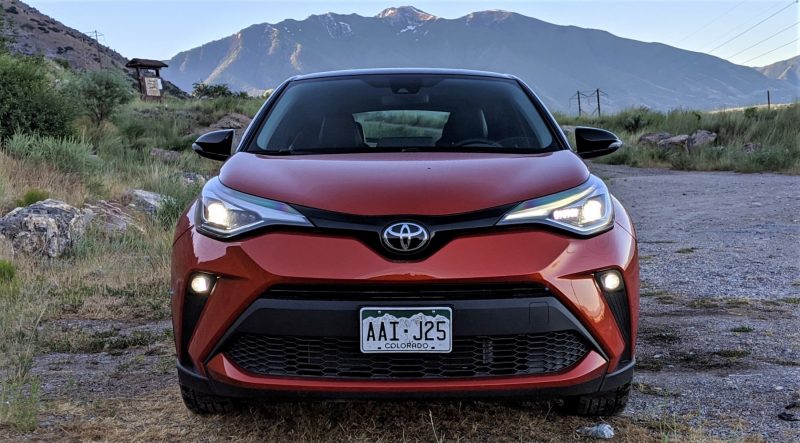
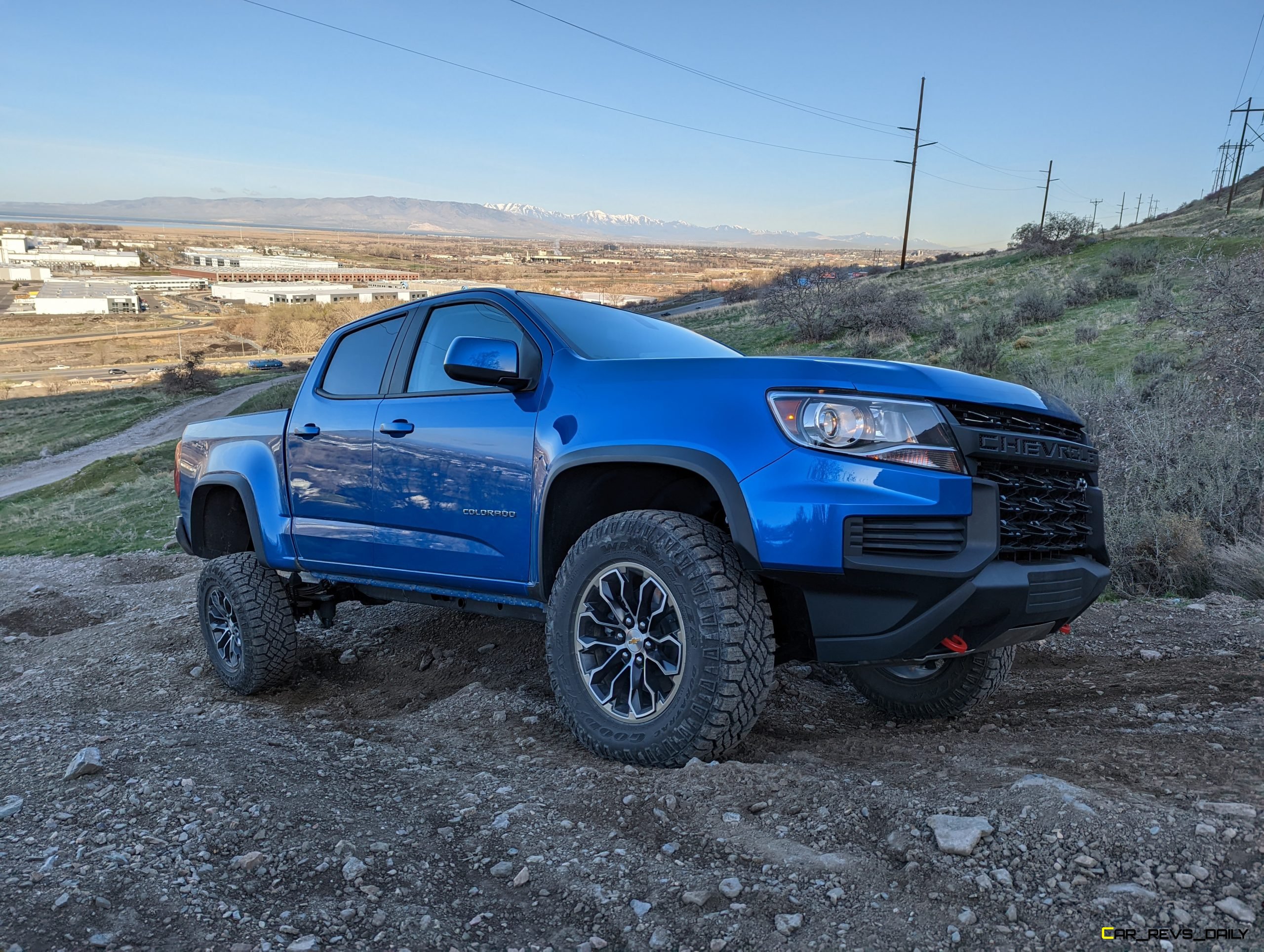
Matthew Barnes is an experienced towing expert. He works as a mechanical engineer and his day job involves testing a variety of vehicles while towing trailers of all types and sizes. Matt shares his knowledge by writing for automotive news outlets in the evenings. When he’s not working he can be found spending time in the great outdoors with his family. He enjoys camping, hiking, canyoneering, and backpacking. Whenever possible he spends time riding in or on any power sports vehicle he can find and claims he can drive anything with a motor, which probably isn’t true.
Matt lives in the Utah mountains and often posts cool off-roading videos to his Instagram and YouTube channel.

